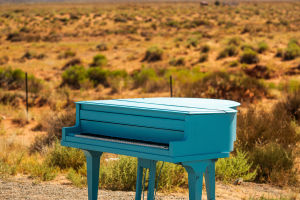A guitar is a plucked string instrument, typically with six strings, similar in shape to a violin.
The guitar is often regarded as the main instrument in pop music, rock music, blues, folk songs, and flamenco. In classical music, guitars are often performed as solos or duets. Of course, in chamber music and orchestral music, the guitar also plays a considerable degree of foil role.
Classical guitar, violin, and piano are listed as the world-famous three instruments.
The ancestors of the guitar can be traced back to two or three thousand years ago in ancient Egypt, Nepal, Babylon, and Persia, with all kinds of ancient plucked instruments. The oldest instrument resembling a modern guitar that archaeologists have found is a Hittite guitar on the site of an ancient Hittite city gate that existed in Asia Minor and northern Syria before 1400 BC.
The curved body of figure 8 determines the unique sound resonance and musical characteristics of the guitar, which have become the most significant characteristics of the guitar and other plucked instruments.
In the 13th century in Spain, the word guitar evolved from Persian into Spanish. Among the various instruments of the time, the "Moorish guitar" and the "Latin guitar" had already appeared. Among them, Moore's guitar body for the oval back, the use of metal strings, playing style are relatively rough. The body of the Latin guitar is similar to that of the modern guitar in the shape of figure 8 flat structure, the use of gut strings, and elegant style.
The Renaissance was the heyday of the guitar. The four-stringed guitar of the sixteenth century and its close cousin, the finger-played riviera, reached high standards of performance and composition. The guitar and Bivera masters at that time included Milan, Nalevais, and Mandala, as well as the five groups of complex string Baroque guitar masters in the 17th century, such as Sanse, Corbetta, and Vishay.
Many of their works remain immortal treasures in the modern classical guitar repertoire. At that time, the musical notation used by guitars, Biviras, and other instruments was not the current staff notation.
Instead, horizontal lines were used to represent each string, and numbers or letters were used to represent phonological positions and fingering, which was similar to the hexagon notation used in folk guitars today.
The classical guitar is also a member of the guitar family. It belongs to the same category as the harp and lute. On the fingerboard, there are 12 characters from the string pillow to the joint of the handle and the instrument case. The fingerboard is wide, the nylon string is used, the sound quality is pure and thick, the sound colour is rich, and there is no protective plate.
It is mainly used for playing classical music, which has strict requirements from playing posture to finger touch string and profound skills. It is the highest artistic quality, the most representative significance, the most extensive adaptation, the most depth, and the most recognized by the art world in the guitar family.
The classical guitar is an instrument made of nylon strings based on a pattern made over 200 years ago. The construction of the classical guitar is markedly different from other instruments; Classical guitar is mainly soloist, taking into account a certain amount of ensemble, collaboration, and so on. The finger plays directly and combines various special playing techniques.
In terms of musical performance, classical guitar mainly plays classical music, taking into account a certain amount of modern classical music. Delicate and changeable timbre, rich multi-part harmony performance ability, can interpret the music of different periods, different styles, and different nationalities freely.
The classical guitar is the most artistic of the guitar family. The most extensive, the most profound, the most representative, and the most recognized by the art world. From the playing posture to finger touch string are strict requirements, skills are profound. Mainly used to play classical music, with rich multi-part harmony performance ability. The timbre is delicate and changeable, and it can interpret the music of different periods, styles, and nationalities freely.


